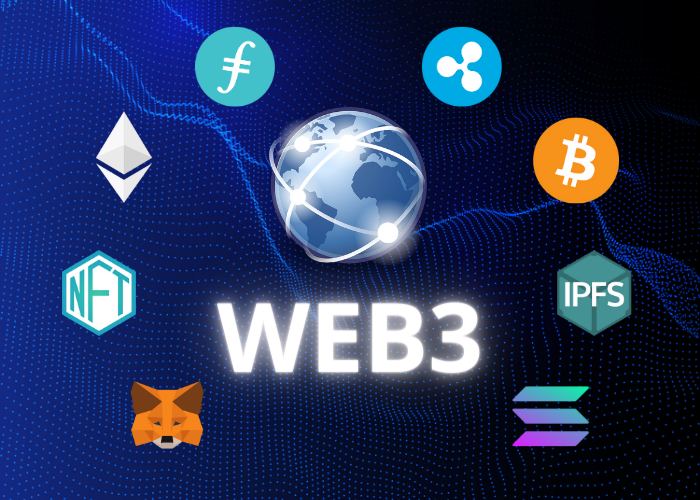Introduction
The internet is evolving. Again.
We’ve gone from the static, read-only Web1 of the 1990s, to the social, interactive Web2 of today… and now, we’re on the brink of Web3 — a decentralized, blockchain-powered internet that promises to give users more control, transparency, and ownership over their digital lives.
But what does this shift really mean? And where does cryptocurrency fit into it? Let’s break it down.
What is Web3?
At its core, Web3 represents a new internet paradigm built on blockchain technology. Instead of massive platforms like Facebook, Google, or Amazon owning the infrastructure and user data, Web3 is designed to be decentralized — where the control is distributed among users, communities, and smart contracts.
Key features include:
Decentralization – No single company owns or controls the network.
Token-based economies – Cryptocurrencies and NFTs fuel transactions and governance.
Trustless operations – Smart contracts remove the need for intermediaries.
Interoperability – Apps and assets can move freely across platforms.
The Role of Crypto in Web3
Without crypto, Web3 wouldn’t be possible. Blockchain-based digital currencies serve as:
Transaction Mediums – Buying assets in the metaverse, paying for decentralized services, or trading NFTs.
Incentive Systems – Users earn tokens for contributing to networks (e.g., running nodes, creating content, or curating data).
Governance Tools – Token holders can vote on decisions in Decentralized Autonomous Organizations (DAOs).
Digital Ownership Verification – NFTs and blockchain records prove who owns what in a virtual world.
Web3 in the Metaverse
The metaverse — a collection of immersive, persistent virtual worlds — is the perfect playground for Web3 principles. Imagine:
Owning a plot of virtual land in Decentraland or The Sandbox and selling it using cryptocurrency.
Wearing a unique NFT skin in a multiplayer game that you can also trade or sell outside the game.
Moving your virtual assets between platforms without being locked into one ecosystem.
Crypto ensures interoperability and true ownership, meaning your assets are not just “in-game items” — they’re blockchain-verified, tradeable commodities.
Decentralized Apps (dApps) and Immersive Tech
dApps are the Web3 equivalent of today’s web platforms, but instead of running on centralized servers, they operate on blockchain networks like Ethereum, Solana, or Polygon.
Examples include:
Uniswap – A decentralized exchange for trading crypto.
Axie Infinity – A play-to-earn game with NFT-based characters.
Mirror.xyz – A decentralized publishing platform where writers can monetize directly.
Immersive tech like VR and AR will allow these dApps to blend with the metaverse, creating experiences where users can interact, trade, work, and socialize seamlessly.
Opportunities & Challenges
Opportunities:
New revenue models for creators (NFT royalties, direct fan support).
Financial inclusion through decentralized finance (DeFi).
Cross-platform digital identity and assets.
Challenges:
Scalability issues with blockchain networks.
Regulatory uncertainty around crypto.
User experience complexity (wallets, private keys, gas fees).
Top Web3 Projects to Watch
Ethereum – The backbone for most dApps and NFTs.
Polkadot – Focused on interoperability between blockchains.
Decentraland – Virtual land ownership and social spaces.
Axie Infinity – Play-to-earn pioneer.
Audius – Decentralized music streaming.
The Future: Crypto + Web3 = User Empowerment
Web3 won’t replace Web2 overnight — instead, we’ll likely see a hybrid internet for years. But as blockchain tech matures and more immersive experiences emerge, crypto will be the economic engine that fuels this shift.
In the Web3 era, you won’t just use the internet — you’ll own a part of it.





